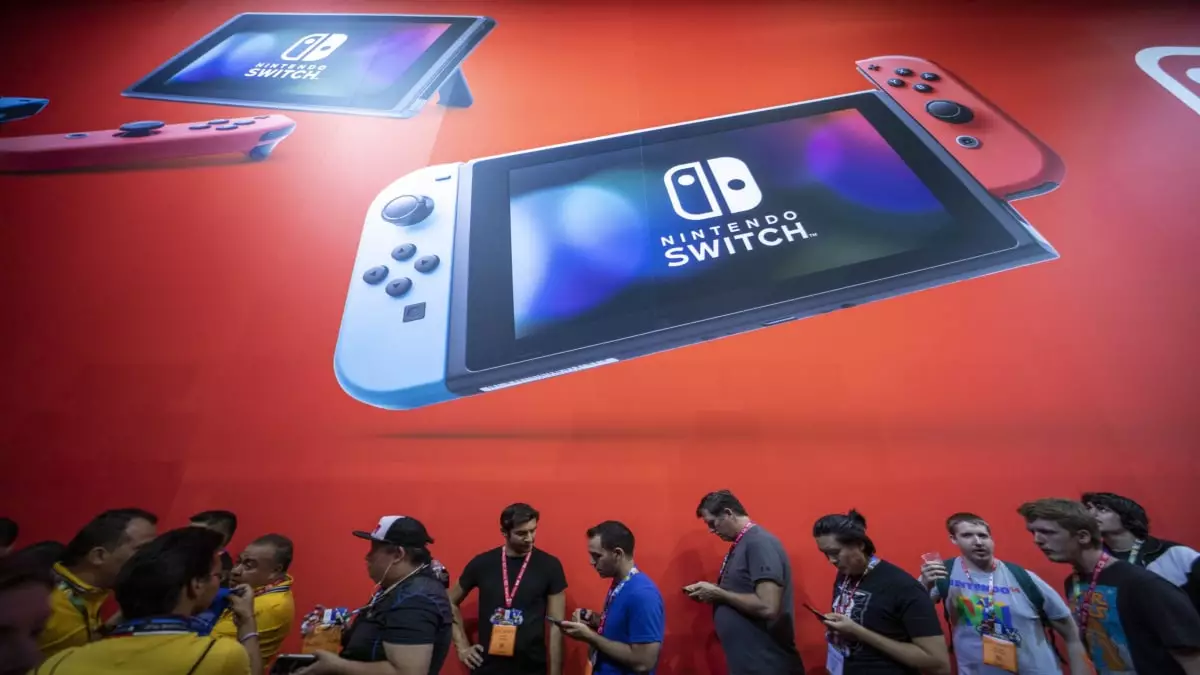The video game industry constantly evolves, pushing companies to adapt to changing consumer demands and technological advancements. Nintendo, a stalwart in this competitive field, is keen on maintaining its footing as it prepares for the launch of its next console, tentatively referred to as the Switch 2. A recent company briefing has unveiled critical details regarding this upcoming console, stirring anticipation among the gaming community.
In an era where consumers value their game libraries, Nintendo’s confirmation that the Switch 2 will be backwards compatible with the existing Nintendo Switch is a pivotal decision. This move allows gamers to carry over their purchased titles from the current platform, ensuring that their investments are protected even as they upgrade to new hardware. Such a policy not only enhances consumer trust but also cultivates a seamless transition between generations of consoles. Nintendo President Shuntaro Furukawa emphasized that maintaining strong relationships with consumers is essential for the company’s success, which is particularly poignant considering the well-established user base of over 100 million active players on the Switch.
Backwards compatibility is often a deciding factor for consumers when choosing between consoles. Other gaming giants have successfully implemented similar strategies, reinforcing the notion that this feature can significantly influence purchasing decisions. Nintendo is wise to leverage its extensive library and player engagement to ensure a smooth introduction of its successor to the market.
Building on the momentum of the Switch’s popularity, Nintendo also announced that its online service, Nintendo Switch Online, will extend to the next-generation console. This subscription service, which has grown to encompass online multiplayer functionalities, cloud saves, and a selection of retro game titles, is poised to enhance the Switch 2 experience. The continuity of such a service ensures that current subscribers have something to look forward to with their new console, ultimately fostering loyalty among its user base.
Furukawa’s statements reveal an awareness of the increasingly competitive landscape of online gaming. As rival companies continue to improve their online capabilities, Nintendo’s commitment to providing a robust online ecosystem will be pivotal in retaining and attracting consumers.
However, the road ahead is not devoid of challenges. Nintendo’s recent financial report painted a rather sobering picture. The company reported a 31 percent decline in quarterly sales of the Switch, selling 4.72 million units in the second quarter of fiscal year 2025. In response to this downturn, Nintendo has revised its sales forecast downward, indicating a more cautious outlook for the current fiscal year.
These declines prompt a critical analysis of how Nintendo plans to reinvigorate interest in the Nintendo Switch and its successor. The gaming market is rife with competition, including consolidation trends and the emergence of newer gaming technologies, not to mention the ongoing popularity of mobile gaming. Established franchises alone may not suffice to drive hardware sales; Nintendo will need to ensure that the Switch 2 offers unique experiences that distinguish it from both its predecessor and rival consoles.
The anticipation surrounding the Switch 2 aligns with a broader context of consumer expectations in the gaming industry. Although specific launch details remain elusive, Nintendo has confirmed that the console will be officially unveiled before the fiscal year concludes on March 31, 2025. This timeline creates a buildup of excitement and speculation, encouraging discussions among fans regarding potential features, gameplay mechanics, and exclusive titles.
In an industry characterized by rapid innovation, it is essential that Nintendo harnesses this opportunity to redefine its market presence. By prioritizing backwards compatibility and enhancing its subscription services, the company is not only looking to preserve its established user base but also to attract a new generation of gamers.
As Nintendo prepares to enter this new chapter, it must strike a balance between honoring its legacy and embracing innovation. The decisions made in the coming months will be crucial in shaping the future of the Nintendo brand and determining its success in an ever-evolving marketplace.

Leave a Reply